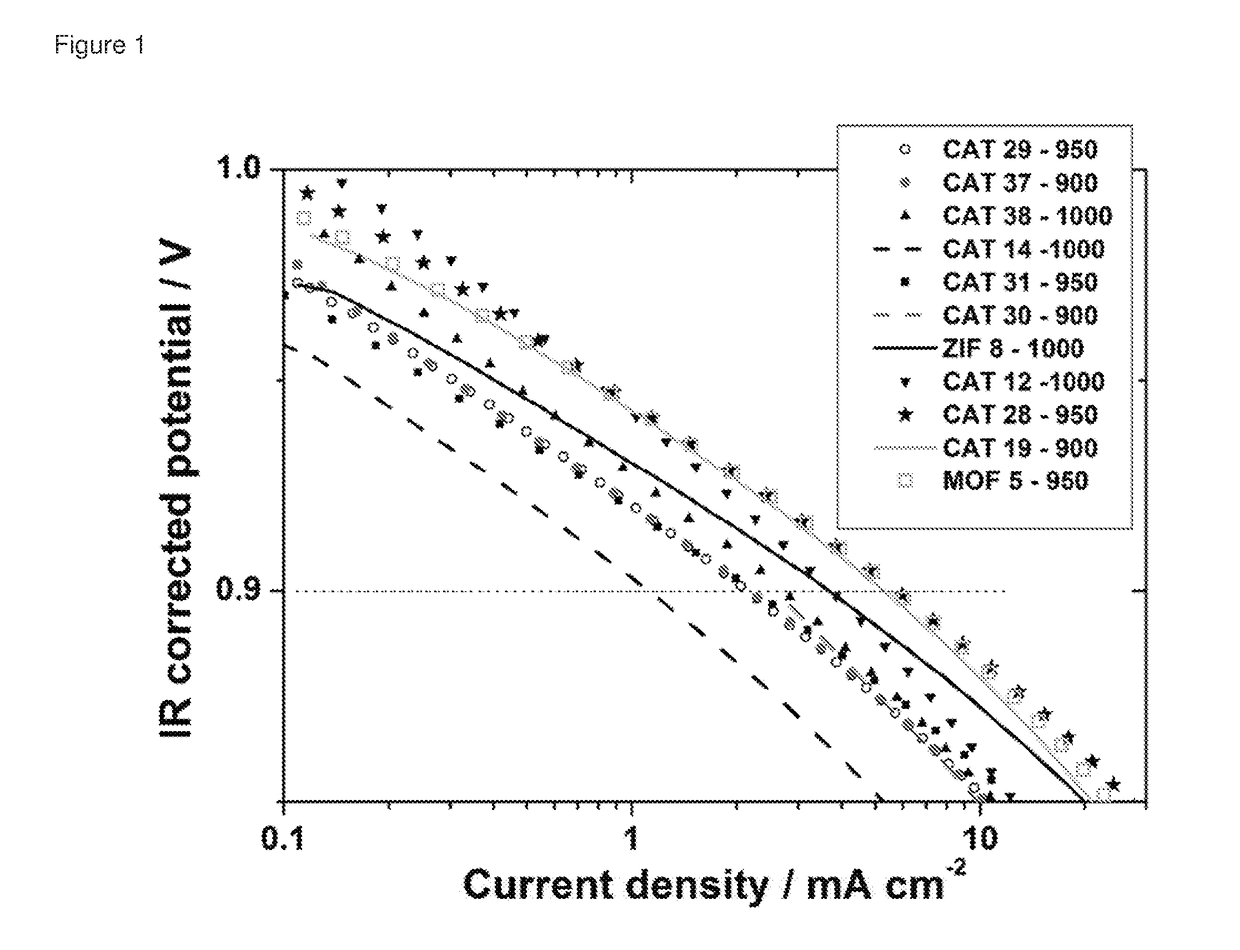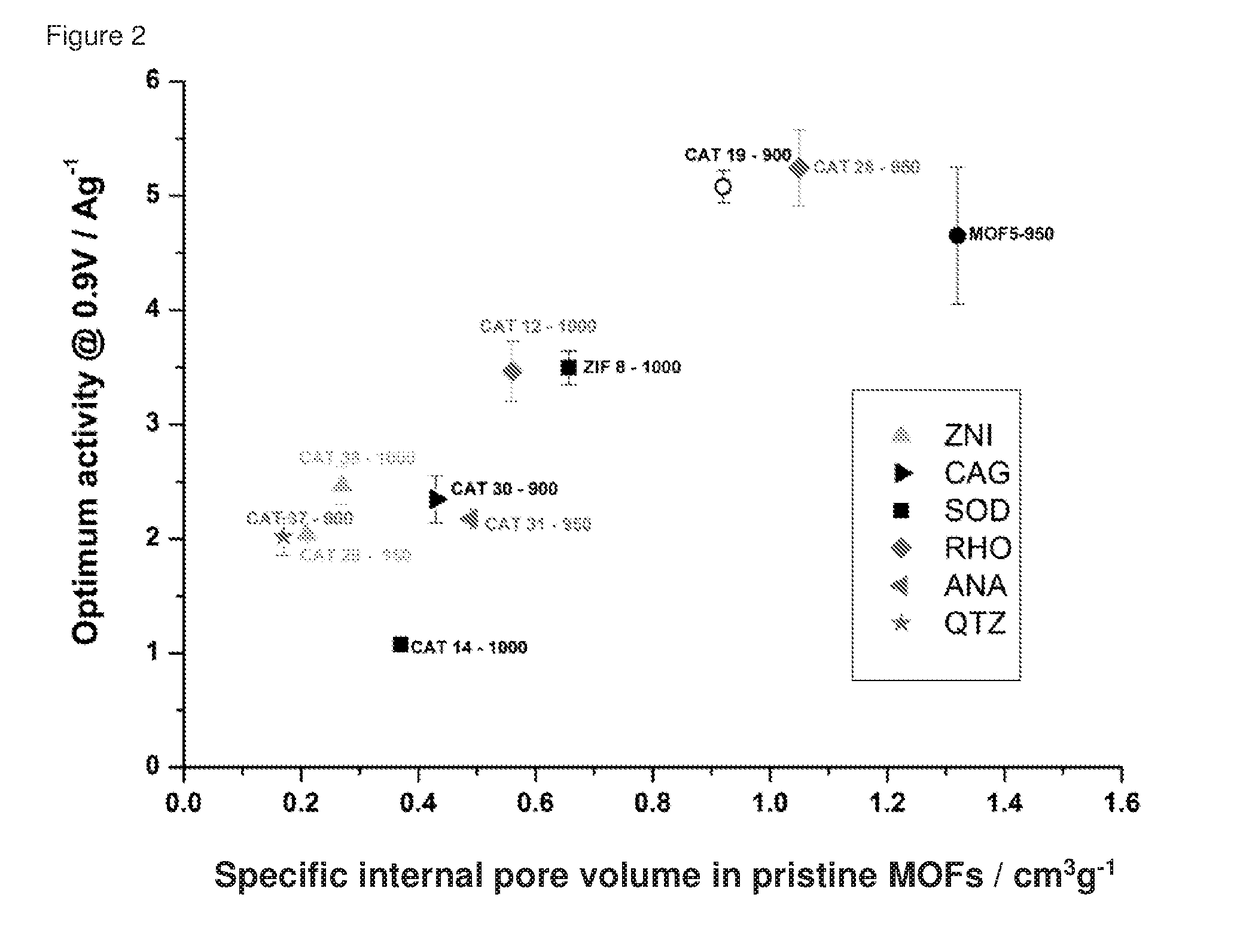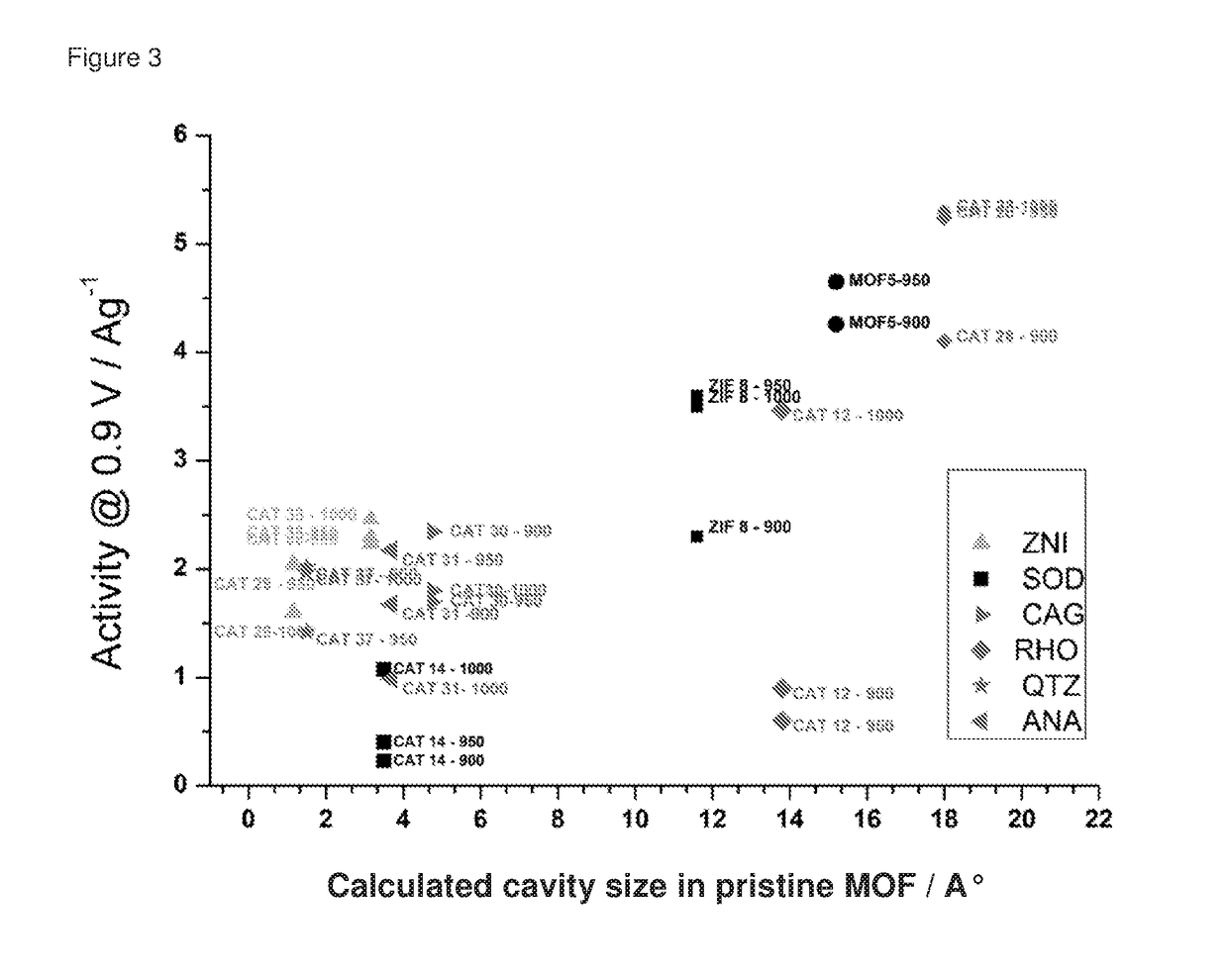Oxygen reduction reaction catalyst
- Summary
- Abstract
- Description
- Claims
- Application Information
AI Technical Summary
Benefits of technology
Problems solved by technology
Method used
Image
Examples
examples
[0084]The invention will now be described in relation to the following non-limiting examples.
Measurement Techniques
Specific Internal Pore Volume
[0085]The specific internal pore volume was calculated using crystallographic structures for each MOF. For that purpose, the crystal structure was first built following the single crystal data given in the literature for each solid. The geometry was optimised using Lennard Jones parameters and electrical charges to determine the positions of the atoms in the structure. In this case, the Universal Force Field (UFF) for Lennard Jones parameters was considered. Within the entire volume of optimized structures and following the strategy previously reported by Düren et al. (T. Düren, F. Millange, G. Férey, K. S. Walton, R. Q. Snurr, J. Phys. Chem. C, 2007, 111, 15350), a theoretical probe size of 0 Å was then used to determine the entire volume of the unit crystallographic cell. The unit cell is the smallest volume of a crystalline solid determin...
worked examples
Cat-28 (Example of the Invention)
[0107]ZnO (3.0047 g, 37 mmol), eIm (7.1495 g, 72 mmol), (NH4)2SO4 (0.7541 g, 7 mmol), Fe(Ac)2 (0.1188 g, 0.68 mmol) and 1,10-phenanthroline (2.377 g, 13 mmol) were placed in a zirconium mill pot with DMF (6 ml) and zirconia milling balls. The mixture was ground for 30 min in a Fritsch mill at 400 rpm. The light pink solid obtained was dried in air. The product was then pyrolysed in flowing ammonia at 950° C. according to the method disclosed in Exemplary Synthesis Method 1.
ZIF-8 (Comparative Example)
[0108]ZnO (2.2803 g, 28 mmol), mIm (5.0349 g, 61 mmol), Fe(Ac)2 (0.0679 g,) and 1,10-phenanthroline (1.2092 g, 6.7 mmol) were ground into a homogenous mixture then sealed in solvothermal bomb under Ar. The reaction mixture was heated to 180° C. for 18 hours. Upon cooling a damp red solid was obtained. The product was dried under vacuum at 100° C. for 3 hours and a pink solid product obtained. The product was then pyrolysed in flowing ammonia at 1000° C. a...
PUM
| Property | Measurement | Unit |
|---|---|---|
| Temperature | aaaaa | aaaaa |
| Nanoscale particle size | aaaaa | aaaaa |
| Specific volume | aaaaa | aaaaa |
Abstract
Description
Claims
Application Information
 Login to View More
Login to View More - R&D
- Intellectual Property
- Life Sciences
- Materials
- Tech Scout
- Unparalleled Data Quality
- Higher Quality Content
- 60% Fewer Hallucinations
Browse by: Latest US Patents, China's latest patents, Technical Efficacy Thesaurus, Application Domain, Technology Topic, Popular Technical Reports.
© 2025 PatSnap. All rights reserved.Legal|Privacy policy|Modern Slavery Act Transparency Statement|Sitemap|About US| Contact US: help@patsnap.com



